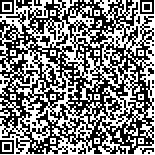下载中心
优秀审稿专家
优秀论文
相关链接
摘要

遥感技术应用已成为中国中药资源普查的一个重要探索方向。以红花(Carthams Tinctorius L.)为种植型药用植物实验样本品种,分别基于分形理论和灰度共生矩阵 (GLCM) 两种方法提取不同的纹理特征,结合光谱信息对资源三号卫星 (ZY-3) 影像进行最大似然方法的监督分类,对比分析分类效果和精度评价。结果显示:加入纹理特征后,总体分类精度提高了0.49%-5.31%,Kappa系数提高了0.01-0.07,结合基于双毯法的分形纹理较GLCM纹理分类总体效果提高至少两倍,其中在Matlab环境下,使用5×5滑动窗口提取的分形纹理特征的分类效果最显著,总体分类精度提高了5.31%,Kappa系数提高了0.07。对于红花分类精度,引入分形纹理特征的分类精度提高到了100%,识别的红花样地效果最完整,破碎程度最小,与其他类别区分度最高;而引入GLCM的分类精度却降低了0.55%-1.28%,可见采用分形理论比采用GLCM提取纹理特征能够更加有效地辅助ZY-3影像识别种植型药用植物。
Remote sensing has become an important exploratory method for the national census of traditional Chinese medicinal resources. We selected safflower (Latin name: Carthamus tinctorius L.) as a sample species of cultivated Chinese medicinal plant species. We extracted textures from ZY-3 satellite images based on fractal theory and Gray Level Co-occurrence Matrix (GLCM) methods to assist the supervised classification. Results showed that the overall accuracy increased by 0.49% to 5.31%. Kappa coefficient increased by 0.01 to 0.07 after textures were combined for classification processing. Accuracy with fractal-based textures improved at least twice as much as GLCM-based textures, particularly when fractal-based texture was extracted with a 5×5 sliding block in Matlab and then added. The classification accuracy of safflower increased to 100% when this parameter was combined with fractal-based textures; by contrast, this accuracy reduced by 0.55% to 1.28% with GLCM-based textures. Moreover, the samples collected from the final recognition results based on fractal theory were relatively complete with a smaller degree of fragmentation and a higher distinction from other categories. Therefore, fractal-based textures can be used to assist in the recognition of cultivated Chinese medicinal plants. Textures based on fractal theory could effectively increase the classification accuracy of ZY-3 images at a higher extent than those based on GLCM.

